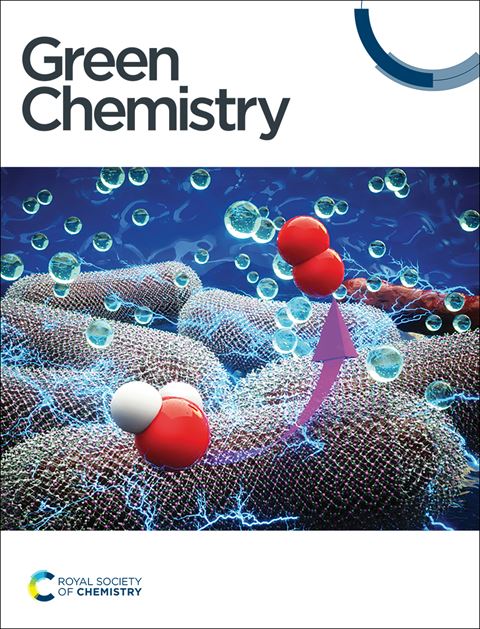Intelligent metal recovery from spent Li-ion batteries: machine learning breaks the barriers of traditional optimizations†
IF 9.3
1区 化学
Q1 CHEMISTRY, MULTIDISCIPLINARY
引用次数: 0
Abstract
As the retirement of new energy vehicles peaks, efficient recycling of spent lithium-ion batteries (LIBs) is significant for environmental sustainability. Roasting integrated with water leaching is a popular process for metal recovery from spent LIBs. However, traditional optimization experiments face the challenges of lengthy and costly procedures due to the variability of waste materials and the intricate interplay between process variables. This study breaks through the barriers by introducing machine learning (ML) to establish a smart prediction model for efficient metal recovery from LIBs. Based on the 8921 data collected, the model incorporates 18 input features, encompassing waste particle size, components, and roasting–water leaching parameters, and predicts Li, Co, Mn, and Ni recovery efficiencies. Four ML algorithms are compared to determine the best prediction models with R2 values of 0.81–0.98 in the training and test datasets. The intricate interaction mechanisms of each feature with metal recovery were revealed, providing a deeper understanding of the recovery process. Furthermore, we developed a user-friendly GUI that instantly suggests optimal parameters for maximizing the metal recovery efficiency, simply by inputting waste particle sizes and components. Finally, the reliability and practicability of the GUI are verified by experiments. This work dispenses with the traditional and extensive optimization experiments and decreases the recovery costs, which achieves efficient and intelligent spent LIB recycling.

求助全文
约1分钟内获得全文
求助全文
来源期刊

Green Chemistry
化学-化学综合
CiteScore
16.10
自引率
7.10%
发文量
677
审稿时长
1.4 months
期刊介绍:
Green Chemistry is a journal that provides a unique forum for the publication of innovative research on the development of alternative green and sustainable technologies. The scope of Green Chemistry is based on the definition proposed by Anastas and Warner (Green Chemistry: Theory and Practice, P T Anastas and J C Warner, Oxford University Press, Oxford, 1998), which defines green chemistry as the utilisation of a set of principles that reduces or eliminates the use or generation of hazardous substances in the design, manufacture and application of chemical products. Green Chemistry aims to reduce the environmental impact of the chemical enterprise by developing a technology base that is inherently non-toxic to living things and the environment. The journal welcomes submissions on all aspects of research relating to this endeavor and publishes original and significant cutting-edge research that is likely to be of wide general appeal. For a work to be published, it must present a significant advance in green chemistry, including a comparison with existing methods and a demonstration of advantages over those methods.
 求助内容:
求助内容: 应助结果提醒方式:
应助结果提醒方式:


